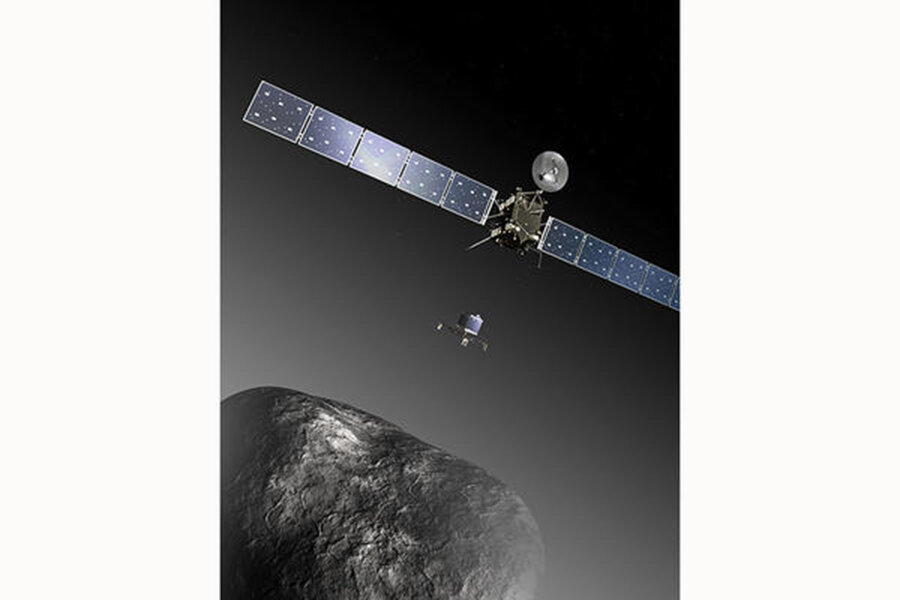Deep-space comet hunter awakes from hibernation, just a bit behind schedule
Loading...
Scientists waited with bated breath to hear back from Rosetta, the slumbering billion-dollar comet-chasing spacecraft.
"But an unanticipated 18-minute delay made everybody nervous, as you can imagine" Stephen Fuselier, co-investigator of one of the instruments on Rosetta, told the Monitor.
Rosetta did eventually wake up, though.
The spacecraft, which was made to fall asleep in mid-2011 after it cruised far from the Sun and out toward the orbit of Jupiter, sent out the first signal that was received by both NASA’s Goldstone and Canberra ground stations, according to a press release by the European Space Agency.
Rosetta was launched in 2004 and is chasing comet 67P/Churyumov–Gerasimenko.
Currently, the spacecraft is within about 400 million miles of the Sun, which means that Rosetta will continue to get enough solar energy.
“We have our comet-chaser back,” said Alvaro Giménez, ESA’s Director of Science and Robotic Exploration.
The successful wake-up mission was announced to the world via the @ESA_Rosetta twitter account, which tweeted: "Hello, world!"
“This was one alarm clock not to hit snooze on, and after a tense day we are absolutely delighted to have our spacecraft awake and back online,” said Fred Jansen, ESA’s Rosetta mission manager.
In a press release, NASA announced that it will also be participating in the European Space Agency's Rosetta mission, which aims to observe "one such space-bound icy dirt ball from up close -- for months on end."
"We are going to be in the cometary catbird seat on this one," said Claudia Alexander, project scientist for U.S. Rosetta from NASA's Jet Propulsion Laboratory in Pasadena, Calif. "To have an extended presence in the neighborhood of a comet as it goes through so many changes should change our perspective on what it is to be a comet."
The scientists are now trying to increase the data rate so that they can study the comet in detail, says Dr. Fuselier. They are looking at the data for the entire time period during which Rosetta was asleep, he adds.
“All other comet missions have been flybys, capturing fleeting moments in the life of these icy treasure chests,” says Matt Taylor, ESA’s Rosetta project scientist. “With Rosetta, we will track the evolution of a comet on a daily basis and for over a year, giving us a unique insight into a comet’s behaviour and ultimately helping us to decipher their role in the formation of the Solar System.”
The spacecraft woke up after 957 days of hibernation.
In November, Rosetta will release a lander – another spacecraft within the larger spacecraft – whose shock absorbers will touch down on the surface of the comet.






